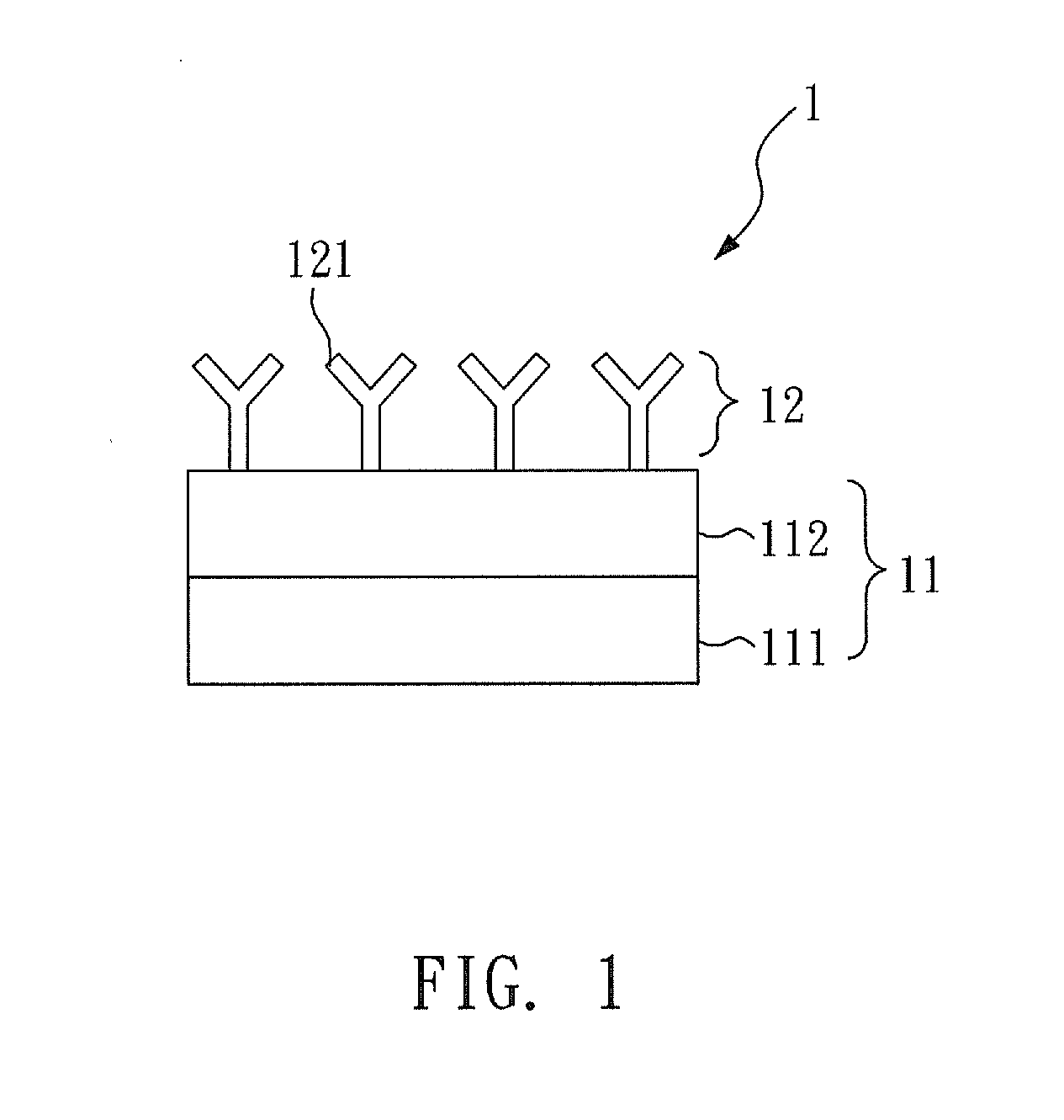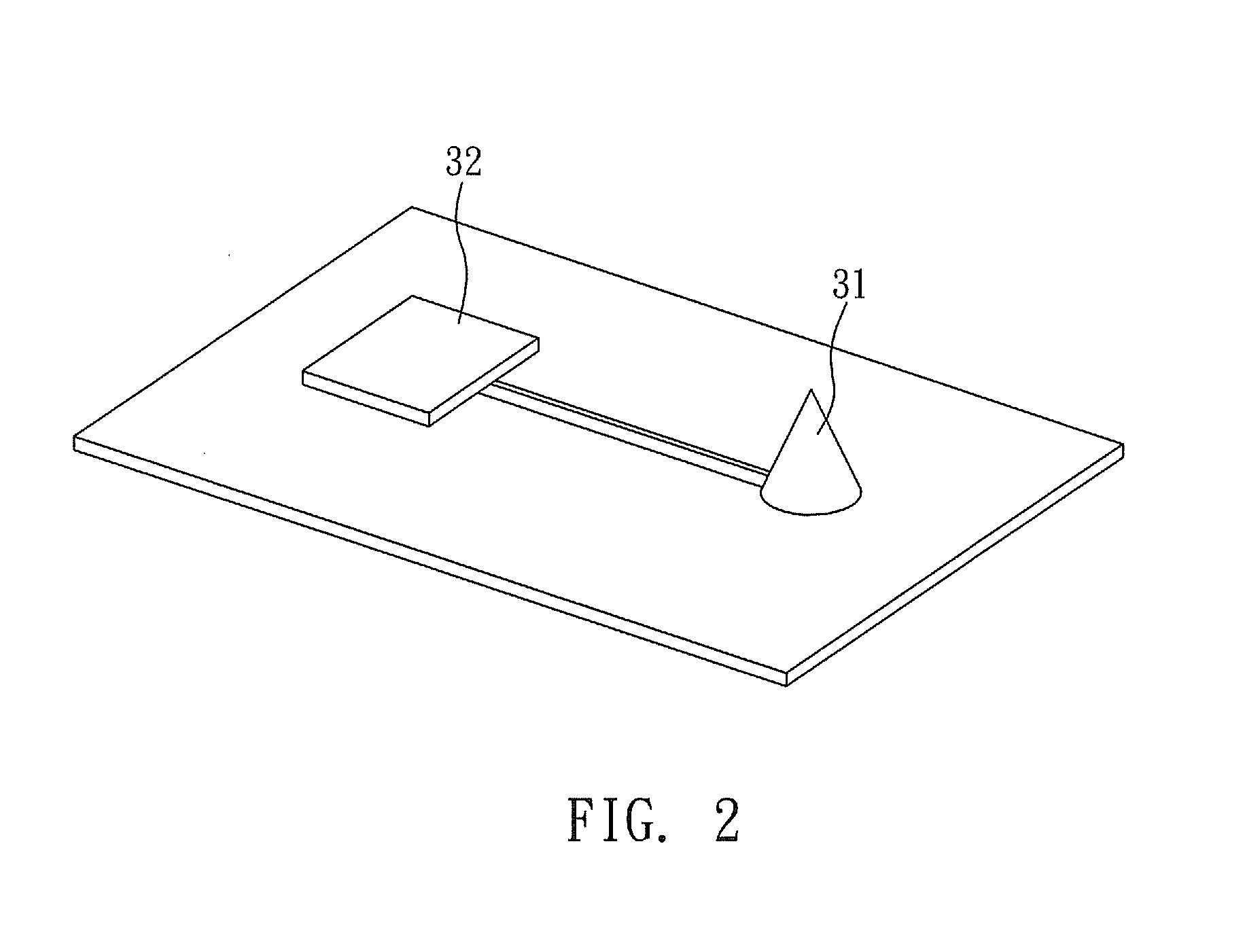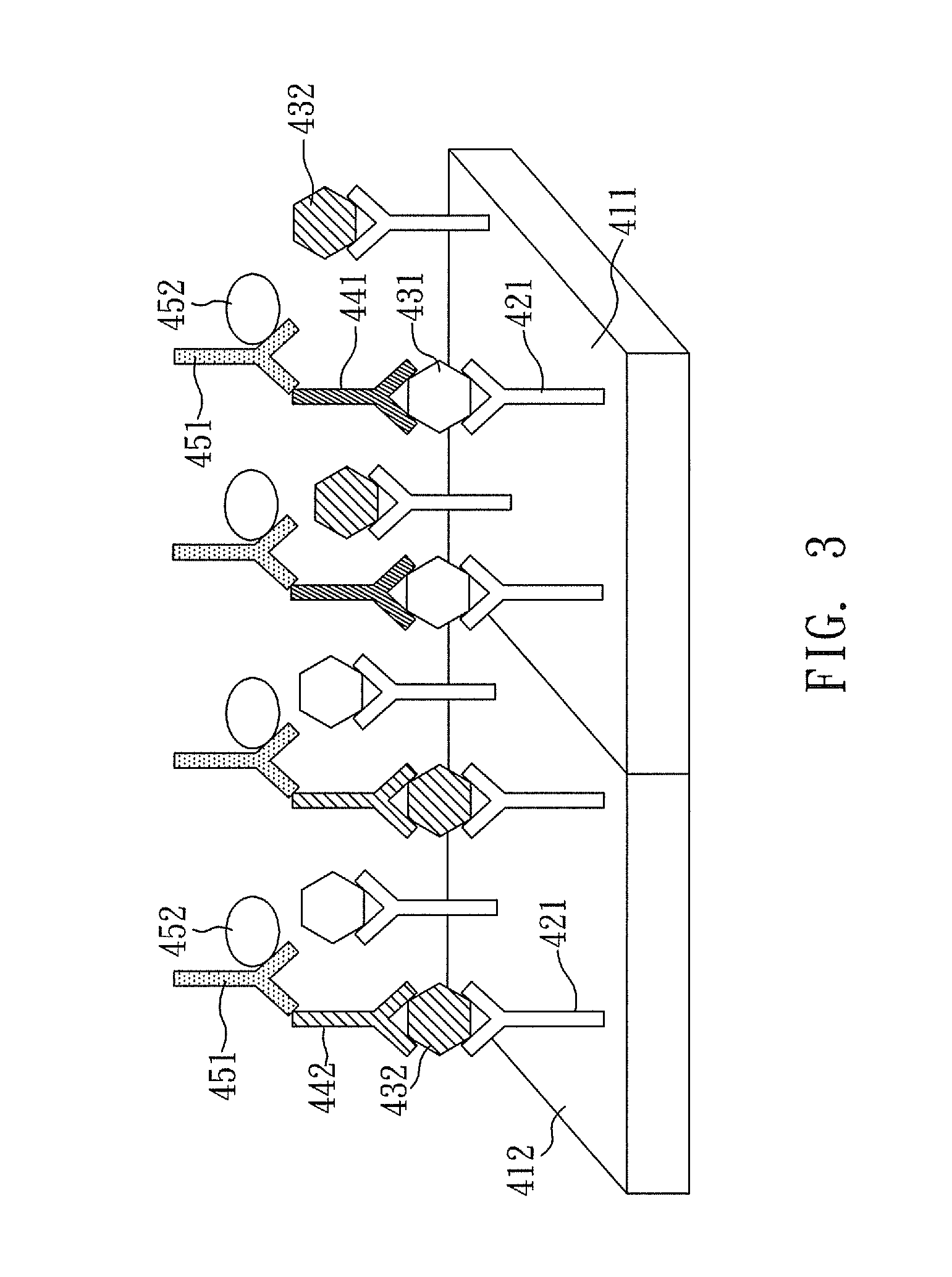Chip and method for detecting glycosylated hemoglobin
a glycosylated hemoglobin and chip technology, applied in the field of detecting chips, can solve the problems of difficult to obtain precise blood glucose measurement results, and achieve the effect of enhancing reliability and accessibility to blood glucose detection technology
- Summary
- Abstract
- Description
- Claims
- Application Information
AI Technical Summary
Benefits of technology
Problems solved by technology
Method used
Image
Examples
example 1
Using Two Glycosylated Hemoglobin PDMS Detecting Chips
[0050]The glycosylated hemoglobin and hemoglobin in the blood sample can be combined to a detecting chip through the use of the first anti-hemoglobin antibody in the biomolecular layer of the glycosylated hemoglobin detecting chip prepared in the preparative example 1 of the present invention. Subsequently, add different antibodies (the first anti-hemoglobin antibody and anti-glycosylated hemoglobin antibody) separately into two detecting chips, so as to calculate separately on different detecting chips the number of hemoglobin and glycosylated hemoglobin in the blood sample. The concentration of the glycosylated hemoglobin in the blood sample can be calculated by using light-emitting and detecting devices to measure the number of glycosylated hemoglobin and hemoglobin combined on different chips. The detailed steps for carrying out the glycosylated hemoglobin detection method comprises the following:
[0051]First, use the glycosyl...
example 2
Using a Single Glycosylated Hemoglobin PDMS Detecting Chip
[0063]The present example uses the glycosylated hemoglobin PDMS detecting chip prepared by the preparative example 1 of the present invention. The method of measurement is identical to the one demonstrated in example 1, with the exception that example 1 uses two detecting chips, for separately detecting glycosylated hemoglobin and hemoglobin content; the present example uses only one chip, conducting detection on the same chip but different antigenic determinant. This means that one single chip is divided into two regions, for the purpose of detecting amount of glycosylated hemoglobin and hemoglobin individually.
example 3
Using Two Glycosylated Hemoglobin Glass Detecting Chip
Experimental Group 3
Using Two Glycosylated Hemoglobin Glass Detecting Chip for Measuring the First Sample
[0064]The present example is directed to using the glycosylated hemoglobin glass detecting chip prepared in the preparative example 2 of the present invention; the method of detection is the same as shown in example 1.
[0065]After blood samples are added to two detecting chips, add individually the second anti-hemoglobin antibody and anti-glycosylated hemoglobin antibody separately to two detecting chips, and add a secondary antibody with non-specificity having a light-emitting molecule attached thereto, so as to determine the average light intensity of HbA1c and hemoglobin in the blood sample based on the calculation of the light intensity of the detecting chip. The ensuing results are shown below.
TABLE 2AverageAverage HbA1cHemoglobinHbA1c RelativeLight-EmittingLight-EmittingConcentrationIntensityIntensity(%)Experimental129476...
PUM
 Login to View More
Login to View More Abstract
Description
Claims
Application Information
 Login to View More
Login to View More - R&D
- Intellectual Property
- Life Sciences
- Materials
- Tech Scout
- Unparalleled Data Quality
- Higher Quality Content
- 60% Fewer Hallucinations
Browse by: Latest US Patents, China's latest patents, Technical Efficacy Thesaurus, Application Domain, Technology Topic, Popular Technical Reports.
© 2025 PatSnap. All rights reserved.Legal|Privacy policy|Modern Slavery Act Transparency Statement|Sitemap|About US| Contact US: help@patsnap.com



